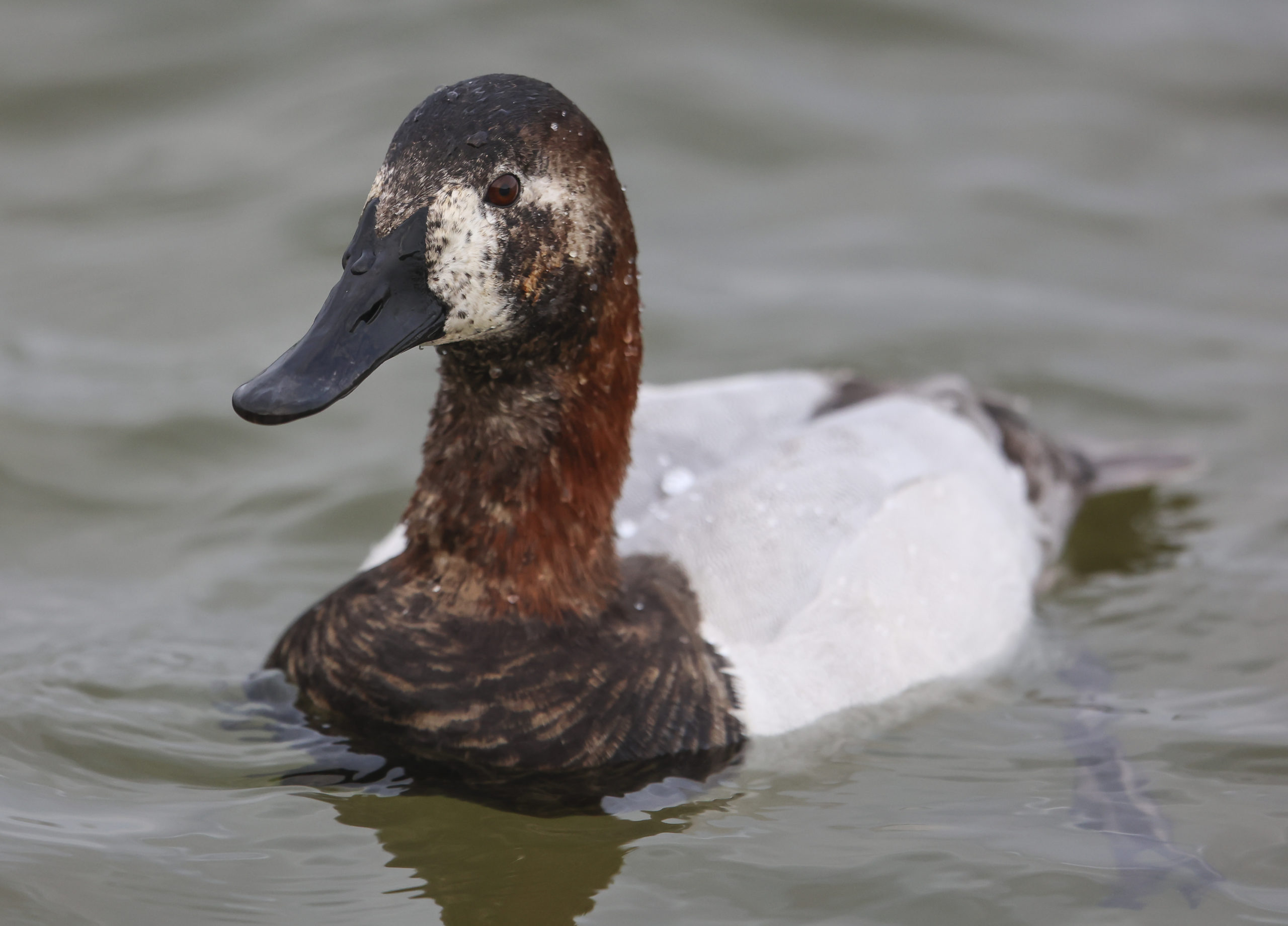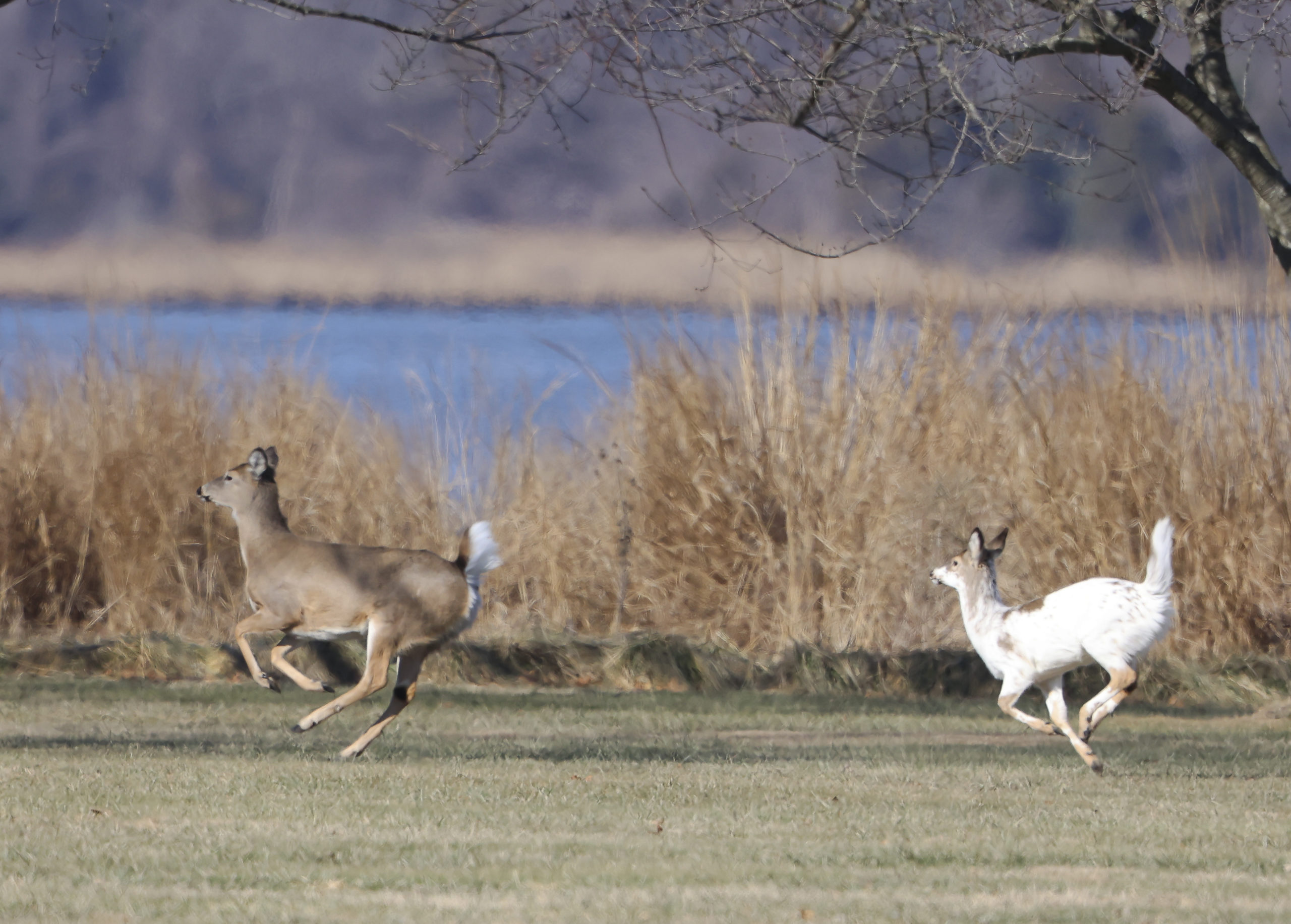Creature Feature


Peculiarities of Piebald Animals
By Wayne Bierbaum
I recently took a walk through the Conquest Preserve in Queenstown. I thought I saw an escaped goat grazing by a waters edge. However, as I walked closer, it was obviously a pale colored deer, also known as a piebald deer.
Webster’s Dictionary states that the word piebald is derived from the Latin pica, which means magpie, a black and white bird, and bald which means white patch. This is also where we get the name bald eagle, meaning white not hairless.
How an animal becomes patched in white has been difficult to trace. The cells that create pigmentation start to migrate through the skin from a part of the embryo called the neural crest. Although it was thought that the pigment cells were migrating too slowly, the tagging and flow tests of the cells showed that the pigment cells were migrating very quickly but not undergoing the usual rate of cell division. The decreased division rate is what leaves white patches in the hair and skin, meaning there is no pigment.
Piebald deer occur in less than one percent of the population in North America but because a white deer is very noticeable it makes it seem more common. The piebald deer are frequently found to have other body deformities too like a curved spine (scoliosis), a bent nose, short lower jaw or shortened legs.
Almost any vertebrate animal can be piebald. I have seen many piebald birds, a lizard, a couple of snakes, and a largemouth bass. Because the condition is due to neural crest cell malfunction, the cause has been studied to see if it can lead to treatment of the neural crest diseases in humans.
In some parts of the country, white deer are protected from hunting. The offspring of two piebald parents are more likely to be piebald. Protection can increase the number of white deer such as the 200 or so found at the Army Depot at Seneca, New York (self-guided tours are available), the world’s largest population of white deer. In Maryland, there is no protection for the white deer.
The opposite of piebald is melanistic. This occurs when the pigment cells divide extra quickly and too much pigment is deposited. Black Eastern gray squirrels are an example, and are very common in some locations like Rockville.
I have seen one extra, extra dark deer but very dark deer are more uncommon than piebald. I hope to get a photo of one someday.
